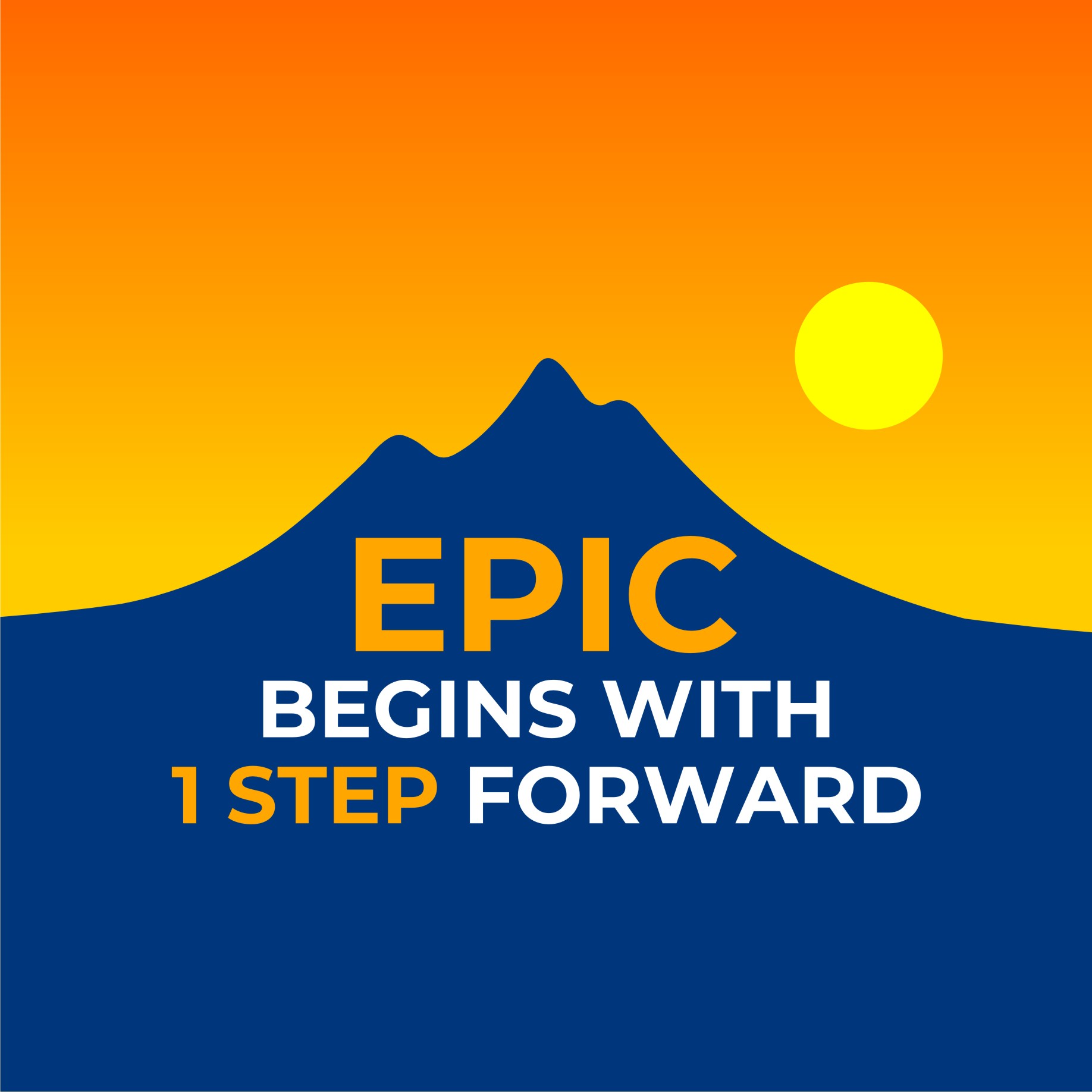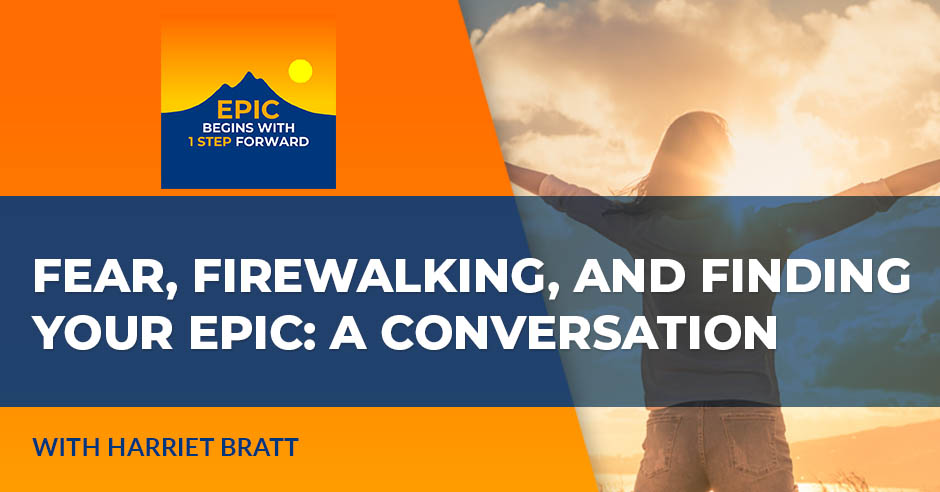In this electrifying episode of EPIC, Begins with 1 Step Forward, I sit down with international speaker and firewalking instructor Harriet Bratt. We dive into fear, resilience, and the power of stepping outside your comfort zone. From firewalking to skydiving, we explore how embracing fear leads to epic transformations. Plus, we discuss the magic of “not yet” and why small steps create a big impact. Tune in and ignite your journey!
epicbegins.com
Free E-book
Apply to be a Guest on My TV show
#EpicBeginswith1stepforward #ZanderSprague #FearlessLiving #StepIntoYourPower #Firewalking #PersonalGrowth
—
Watch the episode here
Listen to the podcast here
Fear, Firewalking, And Finding Your Epic: A Conversation With Harriet Bratt
I am so honored to be joined by Harriet Bratt. Harriet, tell us who you are and what you do.
First of all, thank you so much, Zander, for this epic show. Hello to you and, of course, all of your audience. As has been said, I’m Harriet. We were laughing about my last name a moment ago, Bratt. Take the meaning you like. I’m an international speaker, trainer, and firewalk guide. I work with entrepreneurs, specifically leaders, coaches, and mentors within that industry, to support them in stepping fully into their power and not just speaking from live and virtual stages but creating impact. It’s a pleasure to be here.
That is awesome. I got to start with the fire walking because that’s truly epic. How long have you been doing it? How did you get started? Why do you do it?
The Epic Power Of Firewalking And Overcoming Fear
That is the question I get the second most often. The first is always actual fire. “You walk on fire.” Firewalking. I’m sure many of you have heard of Tony Robbins. I went to a UPW event in 2016. That was my first experience walking on fire. I found it exhilarating and amazing, if I’m honest. I love Tony and that event. I found myself walking across the car park with no shoes on in the cold winter weather. In the UK, it’s more extreme than crossing the fire. I felt more pain in my feet.
About a month later, because of that buzz and excitement, I had another opportunity to walk on fire. This time, instead of it being thousands of people taken across the coals, one walk, let’s go, this was a very different experience. There were about 30 of us in the group, and it was a big round fire. You could walk as many times as you want. Some people were firestanding. As with you, I was mind-blown. What are we always told about fire? It’ll burn you. It’s too hot. Stay back. That’s our story. That’s what we know, not just about fire, but about anything hot.
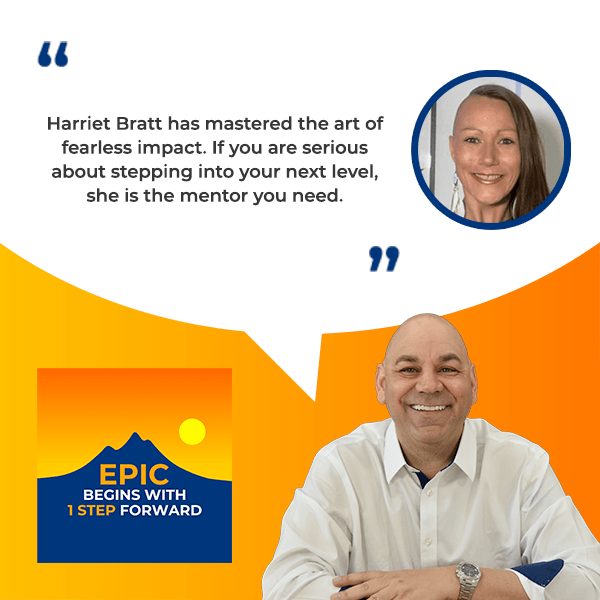
With the experience that I had, for a lot of coaches, and I’m sure with your story as well, Zander, when we experience something that creates a profound difference in ourselves, it’s exciting to be able to take that out and share it. I very quickly went and got myself qualified to become a firewalking instructor. It’s an activity that has been done for thousands of years. It’s not new, but it was Tolly Buchan from the US who brought it into an experiential breakthrough activity as well.
That’s where it was born from. I find it an incredible experience that allows people to not be told, not be reassured, and not have a moment of journaling but to experience their potential, power, and ability to feel the fear. I don’t care who you are when you’re standing in front of that fire. It’s scary. Fear shows up, but being able to feel that fear and make a conscious choice to walk the fire shows people that they’re able to feel the fear in their everyday lives. As your show says, take that step and move forward in spite of fear.
Although I haven’t done fire walking yet, I use “not yet” all the time. I’ve done some epic things in my life, like bungee jumping in New Zealand, skydiving, scuba diving, and stuff like that. I do have to say that that fear that you feel, I know that feeling, when I did bungee jumping. I was all excited. It was a total bucket list thing. I got there. It becomes incredibly real and different when you’re standing on the edge, looking 165 feet down, going, “Am I going to trust that this gigantic elastic band is going to stop me and I’m not going to plummet?”
It’s that exhilaration like when you first start and have that moment of, “I can’t stop this. I’m in this.” When you survive this thing, you’re like, “It was so great.” One of the funny things is they were videotaping it and then interviewed me when I got done. I don’t sound like myself, Harriet. The adrenaline is rushing so much. They’re like, “How was it?” I’m like, “That was great.” I had this monster voice when I went skydiving. I did a tandem jump. I’m hanging out of an airplane at 10,000 feet. It was awesome.
I can relate to the bungee jump. Unfortunately, we were in South Africa. I had an opportunity to do it. I was standing on the bridge. They called it off because of the wind. I don’t know if that was a blessing or if it would have been greater to do it. The skydiving I can relate to. I don’t know about you, but the day before, the morning of, the drive to, the airplane going up when you’re on your way up. I was in so much fear, running all of these stories.
I remember looking at the instructor next to me. I said, “Are we nearly there?” I was looking out the window. He said, “We’re about halfway.” My stomach flipped. I was petrified. As you say, there was this GoPro on my face as you’re sitting like the open door of a plane, the most unnatural experience when you’re flying. You see my eyeballs roll back. It looks like I’m about to throw up, but then, within seconds, my arms come out.
It’s unbelievable. I like to say when people ask about skydiving, “First of all, I learned more about physics in the human body in the first two seconds of skydiving than any class ever.” There are a couple of things that you don’t realize until you do it. One, falling is a visually stimulated sensation. The human eye only has about, at most, 1,000 feet of depth perception. You could be at 5,000 feet or 10,000 feet. You’re not able to tell the difference. Your eye isn’t.
Falling is visually stimulated. I only felt like I was falling for the first second or two because I had the airplane as a reference. After that, it was unbelievable. I’m perhaps a little older than you. I grew up in the ‘70s and ‘80s. We did all kinds of crazy stuff, like not wearing seatbelts in the car, hanging out of the car while it was going down the road, and standing in the back. With skydiving, it’s your entire body. In a tandem jump, you’re doing 120 miles an hour. This is incredible.
The other thing I learned was that when you watch the videos and someone pulls the cord, all of a sudden, they shoot up. That happens because one person is decelerating, and the other is still falling at a constant rate. That’s why they shoot up. I will also say that at that point, there was probably enough adrenaline pumping through my system. My leg could have been ripped off. I probably wouldn’t have felt it for two days.
Being able to feel fear and make the conscious choice to walk the fire shows people that they can feel fear in their everyday lives.
I can relate to that. Thank you for sharing that. You’re teaching me. We learn something new every day.
Experience is useless if we’re not sharing it. What good is knowledge if we just hold on to it?
Why Sharing Knowledge And Experience Is True Power
They say, “Knowledge is power.” I always say, “No, knowledge is not power. Using, executing, or sharing that knowledge is power.”
It’s what I’m all about. I want people to step into their epic. We all are so capable. The fact of the matter is, even before you started doing all of this area, you’d already done epic things in your life, but we somehow discount it. We forget and say, “I overcame this.” If you have ADHD, a learning disability, or some kind of physical something happens, you were five and you crash on your bike and break your leg bad, I don’t know.
I completely agree with you and love that you’re sharing that. As you were saying, it came to mind that I had a conversation with my husband. He’s an incredible man. As with all of us, he’s on his path and journey, but he’s in the personal development world. He was someone who always said, “I’m not good at communicating. I’m not an emotional person.” Over the years, we’ve had these different conversations and have been in this world.
One time, he sat there. He shared some of his truth in the most vulnerable space I have ever seen him in. That’s epic, being able to speak up, having a difficult conversation with a loved one, little tiny moments that sometimes become part of life. They’re epic moments that are part of defining who we are and how we move forward and enjoy our lives.
When I talk about epic, epic evokes huge things. Some people’s epic journeys are huge. My epic is not your epic. The cool things I’ve done all came because I decided to at least try to do them. Often, people’s epic dreams are to write a book, run a marathon, or travel somewhere. They think, “That seems impossible. How am I going to do it?”
We fail at stuff. We fail every single day. It doesn’t mean we stop. Yet people are like, “I can’t do it. I need to have all the steps.” I can assure you that writing three books in and of itself is epic. I’m not trying to break. I’m a talker, not a typist. Every day I see my books, and I’m like, “How did I write three books?” It seems impossible.
That’s epic. It’s inspiring for others to hear you share that. “He wasn’t a natural writer. He’s more of a talker. Maybe I can do it too.”
I encourage people. Epic could be you go, “I want to change the way I eat,” or, “I’ve always been scared of public speaking, but I don’t want to be scared of that, so I’m going to go take a speech class or volunteer to do something.” Whatever your epic is, it’s your epic.
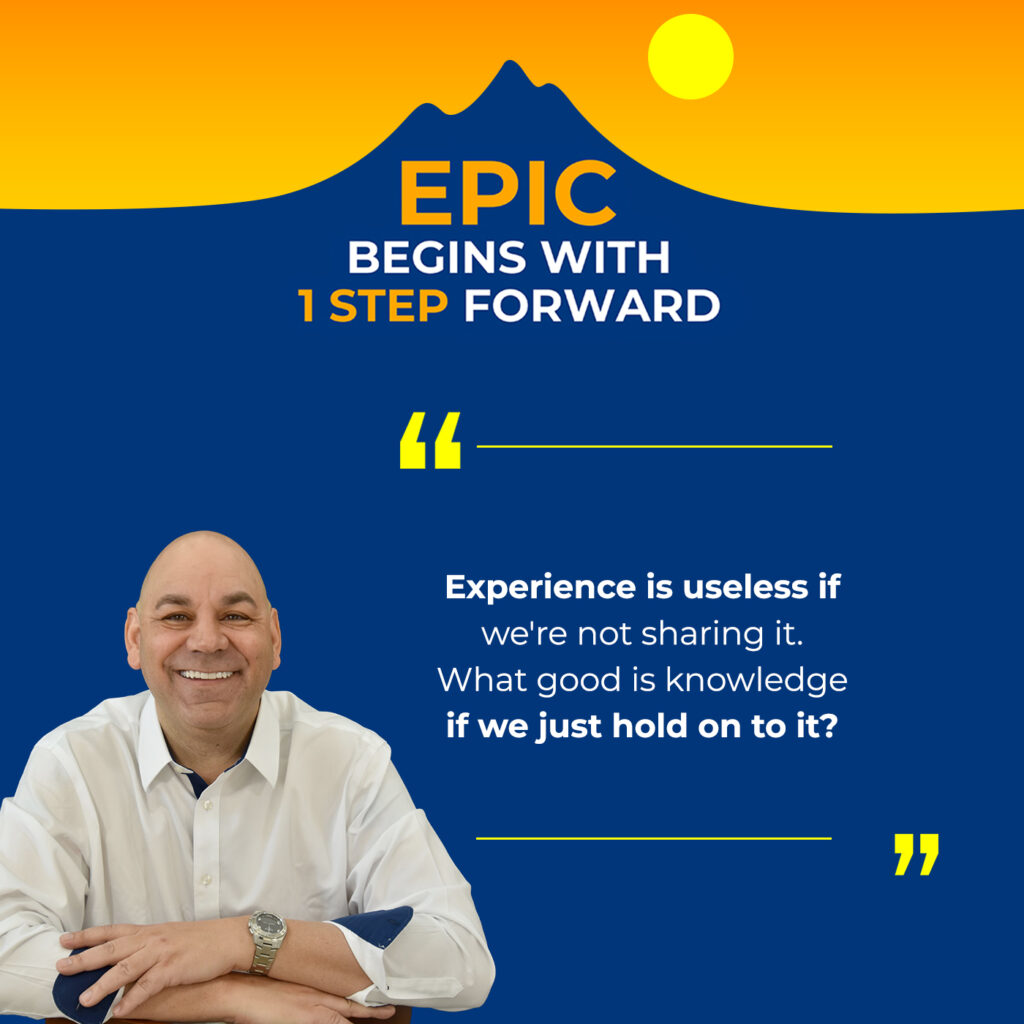
Go for it. You said something so important. We all fail. It doesn’t mean you’re a failure. It’s about taking the steps. I never call them mistakes. I call them mustakes. It’s a part of life and your every day. If you want to progress or do anything that feels outside of your comfort zone, that feels scary and different, it is about feeling that element of fear but stepping up in any way.
As I say in my book, the only thing you feel 100% is the thing that you do not try. As an entrepreneur, I’ve tried things and failed at them. Maybe it’s something for my business. “I’m going to have this package.” It doesn’t sell or work. It doesn’t seem the right fit. I don’t know about you. You’re an entrepreneur, too. I’ve been a very generous person, buying lots of software tools that are supposed to help me do my job better. It’s not that they’re bad. They’re just not the right tool for me. As a person who runs, there are lots of running shoes, and they’re all good. I just needed to find the ones that worked for me.
That’s so important. We’re talking about epic, taking that step, and doing what’s important to you in your life. That’ll look different for everybody. I always laugh at things like morning routines because there are so many different books about what you should do or what you should include in your morning routine. It’s the same thing. What is the best thing for you at that moment? Allow yourself to find that. Sometimes, it takes time. It does. You find it through trying.
The fact of the matter is, as someone who’s a licensed mental health professional, I understand how change is hard. We talk about stepping out of your comfort zone. We have comfort zones for a reason. There’s an evolutionary reason. “Here’s what I know. Here’s how to do it.” Change is hard. It does take time. It’s not instantaneous. It takes practice. It’s called practice for a reason. A habit takes practice. We all have practices.
I took some coaching courses a few years ago. I was assigned a practice. It was assigned to me because it was challenging for me to do. For someone else, it was easy and what they had to do. One person’s practice was to talk to a stranger, someone they didn’t know, and start a conversation because they were afraid of interacting with other people. I’m like, “Could you give that to me? That would be so easy.” It’s different.
We like structure. You were talking about the morning routines. We all do stuff in a particular order because there’s structure, and it makes us feel comfortable. All of a sudden, that gets disrupted, whatever your morning routine. Let’s say the alarm doesn’t go off. You’re late. You don’t have as much time to eat your breakfast or whatever. The train is off the tracks for a little bit. “Why am I so discombobulated?” It was structure. You knew you felt comfortable. “I know how to do this.”
You’re happy in the familiar.
Structure helps us on our epic journeys. When I first decided to run a marathon, I had no idea how I was going to run 26.2 miles, but I joined Team in Training, which is the fundraising side of the Leukemia and Lymphoma Society. They gave me a training schedule. All of a sudden, I’m like, “I rediscovered that I am structured.” I like structure. It made it so much easier. All I had to do was look at that calendar, and it said, “Go run 30 minutes.” I’m done for the day. I don’t have to worry about how I’m going to get there. It’s all step-by-step.
The Importance Of Structure And How It Creates Freedom
Another epic moment for you there with the marathon. I completely agree. Interestingly, some of your audience might be thinking, “Not for me.” I was that girl a little bit with my ADHD, but also my personality and the story I was telling myself. “No. I want to be free. Here today, gone tomorrow. I don’t want to make plans. Diary? What diary?” Becoming an entrepreneur had a big shift in that. I started to see that structure brings freedom.
Structure gives more space instead of carrying all these things you want to do or you’re thinking about around inside of your head. More often than not, for example, training. Thinking about it and doing it are very different things. When it’s scheduled in, it’s there. You are much more likely to take action, especially if there’s accountability to it in certain tasks. Once you’ve done it, you’re free. You’ve got that space to think about the other areas of your life or your other priorities, whatever they might be.
Knowledge is not power. Using, executing, or sharing knowledge is power.
When I was doing my internship for the hours I needed to become licensed, I was the school-based counselor for middle school and high schoolers. A lot of my clients had academic challenges. Some of them had ADHD. I get that it’s hard to stay focused long-term on tasks. I brought in something I had used in my academic career, which was for homework, structure is your friend. Do your homework in the same order every single day. That way, you don’t think, “What do I have to do?” You know what you’re doing, and you do it in the same order.
If you don’t have homework in that subject, go to the next one. Start with the one that’s your least favorite because it will take the most energy for you to get through. Work your way toward the easiest one. For my clients with ADHD, maybe twenty minutes was all they could stay on task before getting distracted. No problem. Map it out. Know that you’re starting your homework at 3:00 and that at 3:20, you get a 10-minute break. Set an alarm on your phone. When that alarm goes off, if you’re watching TikTok, YouTube, or dancing, you go back to your task.
My clients who did this, especially the ones with ADHD, reported back that homework was hard but wasn’t as hard because they said, “That structure helps me.” They knew, “I’ve got five more minutes, and then I get a break. I’m okay. I can push my way through.” That’s structure. There’s so much more freedom when you create structure because you know what you want to do and when you want to do it. You discover that you have so much more free time.
I can relate to that, especially from the ADHD side. Almost, though, to merge our previous conversation with what we’re sharing, it’s that identifying what does or doesn’t work for you. The Pomodoro theory is exceptional for people with ADHD. I also think it’s encouraging the way you do something. For example, I can be hyper-focused if it’s something I love. If I’m crafting a speech, prepping for an event, or recording for an online course, I’m in. You’re going to have more trouble stopping me.
My husband is at 2:00 AM saying, “Are you coming to bed?” If I’m doing my taxes or admin, to be honest, there are accountants that buzz off numbers, but not me. I have to do exactly what you shared. I have a standing space as well. I stand. I have music on, not that I would start dancing, but for background music. I’ll have a timer on for twenty minutes. I’ll do it. I’ll go off for a dance. I’ll walk out in the garden. I’ll come back and do another session. It’s seeing and finding what works for you.
It does take experimentation. Is it 20 or 30 minutes? From being a technical instructor for years, teaching people software, I got very good at teaching highly complex things. I would take breaks. People would ask, “Why are you taking breaks for?” I’m like, “Your company has paid for me to teach you how to use the software they bought.” You can’t retain anything much past 45 minutes, but more like 30 minutes. I’d go for about 40 or 45 minutes, have a short break, and then bring them back.
You and I are probably similar. We could talk for hours on end about the things we love that we want to, but that’s not the point here. I want people to remember. “I delivered all that information to you, but you only retained the first half hour. The rest of it’s blah.” I know Zander talked about it, but I can’t recall what it was.” Find all of that.
I got into what you were saying. I train speakers. From that perspective, I see speakers often try to talk to their audiences for 1 hour or a 90-minute keynote. If you’re running an event, have those regular breaks to give people the space to make the most of their attention span. If you’re doing a keynote for 90 minutes, have that space for interaction and to capture their attention again. Remember that people are not going to absorb everything you say if you just talk to them for 90 minutes over and over.
Tell some stories.
Never share a point without a story. Never share a story without a point.
Exercise, question, and engagement.
I’ve got tons of stories. I love stories. A lot of times, my goal is for you to remember two weeks from now whatever my point was, be it teaching or a motivational speech. I want you to remember it. I’m going to tell you a story, an anecdote, or something that hopefully, two weeks from now, when you’re like, “That was great,” all of a sudden, something comes up. If you remember the story and you remember the point, I succeeded.
I think it’s Les Brown who says, “Never share a point without a story and never share a story without a point.” When you can do that effectively, exactly as you’ve shared, people are much more likely to remember the main message.
There are powerful things for the journeys we’re on. Some of our journeys take time. For example, when I was training for the marathon, someone asked, “Have you run your marathon?” “Not yet.” Why? It’s two months from now. It’s not time for me to run it. 1) I’m not ready. 2) The event isn’t happening. People get that. When we’re on other personal development things, people go, “Harriet, have you finished your book?” “No.” It makes it sound like it’s never going to finish. The fact of the matter is that it’s a highly dynamic process.
The writing part is challenging, but the editing part takes even longer and is more challenging because you get tired of reading your own words after you’ve read your whole book six times. It comes out, and everyone’s excited, but then you’re like, “I don’t want to see my book for a month. I’ve been through every word 6 times in the last 6 weeks.” What are some of your not-yet?
It’s speaking in a stadium. Let’s put some fire into that. That’s a not yet of mine. Moving to Europe with my husband is not yet, but it is more immediate. I’m excited. That’ll be happening soon. I love this question. What are a couple of other not-yets? Building my speaker membership is done, but I’d like to see it at 100 members, continuously growing. These are some of my bucket list items. You reminded me of the bungee jump earlier. I’d like to do a bungee jump again. Areas of travel. Have I been to Canada snowboarding yet? Not yet, but I’m doing it at some point. Off the top of my head, those are the first few not-yets that come to mind.
I saw the stadium and talked to them.
Thank you.
I’ll start with a small stadium. I was watching Bohemian Rhapsody, and I’m like, “If I could fill Wembley Stadium and people were all excited to hear me speak, that would be awesome.” I shared that with some people. “That’s 60,000 people.” I’m like, “ I know. Isn’t that incredible?”
You get in the energy of it, and it’s exciting. There was something you shared there. I usually say, “When I.” If it’s something important to me, a priority, and a not-yet, I always say, “When I achieve this.” You could say, I’m going to fill Wembley Stadium, O2,” or whatever over in the US. They’re all people that go, “No chance. You’re not a big enough name yet.” All these things. All the people speaking in those stadiums at some point weren’t doing that, and it became a goal or another step in their journey. It’s possible. It’s how you approach it and whether or not you keep taking that epic one step forward every time.
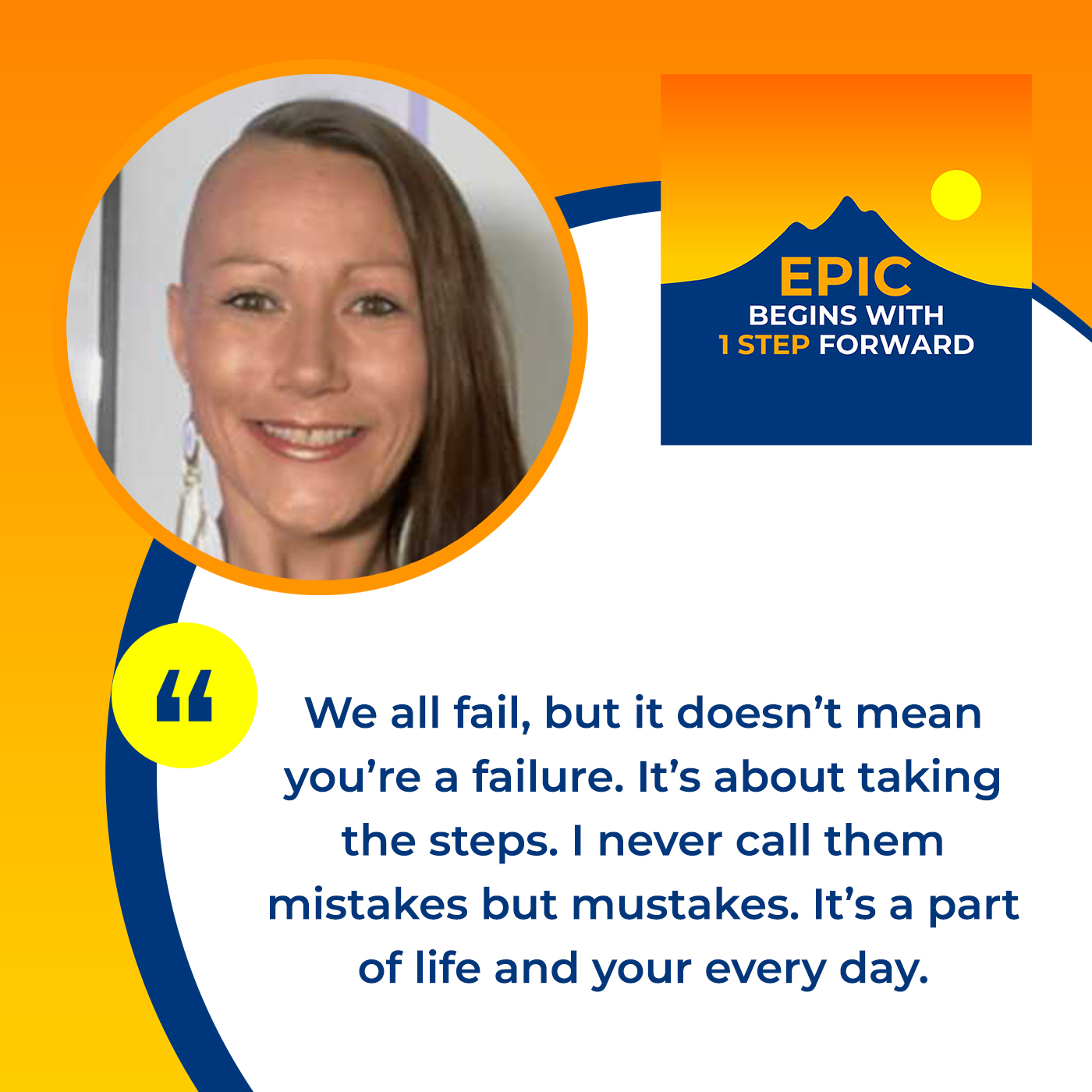
It builds on itself. The things we want to do, even if everyone else is like, “There’s no way.” This is not the body of a marathon. Yet I ran 10 halves, 4 fulls, and a 50K ultra. Why? I said, “I want to try. I’m going to finish this.” It may be ugly. It took me a long time. I’m not a fast runner. I did a run-walk thing. It doesn’t matter. I crossed the finish line. I completed it. That’s what’s so important. The rock bands may have dreamed of playing at Wembley, O2, AT&T Park, or Madison Square Garden. They got there because they’re like, “I want to make this happen.” Any of the people we know that we see, go, “How did they do that?” It’s because they said, “I’m going to achieve. If I don’t, it’s not for lack of trying.
The Journey Of Becoming An International Speaker
We started this around the fire. I remember I was from a tiny village at the bottom of the UK, where no one had barely heard of it, let alone done it. Pretty much everyone thought I was crazy. “You’re from Cornwall. Are you going to become an international speaker?” “Yes.” I run events around the world. That was crazy to a lot of people, but it was important to me, so I took action. It’s the same with fire. You stand in front of that fire and think, “Am I going to be able to do this?” You do. It’s being able to make that conscious choice. It’s Susan Jeffers who has that book, Feel the Fear and Do It Anyway. Feel the fear, take the step.
Harriet, this has been so awesome and epic.
Indeed, it’s been epic.
How can people get a hold of you?
My website is HarrietBratt.com if you’re someone interested in improving your impact and income as a public speaker. If you’d like to connect, want to ask a question, or have a conversation, I warmly invite you into my DM on either Instagram, Facebook, or LinkedIn.
Thank you so much for coming. It’s truly an epic conversation. Hopefully, you and I might both give a speech in some huge stadium together. That would be awesome.
That would be incredible. We have already established that we will do an event in the area where you live, so I feel we need to cross paths. I also want to say thank you. I enjoyed this conversation. I love your show and what you’re doing for your community. For everyone reading, trust what this man is saying. You have epicness within you. It’s just taking the step.
Thank you so much. I want to remind everyone that if you’re ready to begin your epic journey, come to EpicBegins.com. Find all the information I have. Get in contact with me. I also want to remind people that I’ve got a brand new TV show called Epic Begins with One Step Forward. If you’d like to be a guest, come to
Za****@Ep********.com
. Let me know. I’ll see about getting you on the show. As always, I want to remind everyone that epic choices lead to the epic life that you want.
Important Links
- Harriet Bratt
- Feel the Fear and Do It Anyway
- Zander Sprague’s Email
- Harriet Bratt on Facebook
- Harriet Bratt on Instagram
- Harriet Bratt on LinkedIn
About Harriet Bratt
 Harriet Bratt International Speaker, trainer, warrior and Firewalk guide. Harriet is a powerhouse speaker and mentor on a mission to help ambitious entrepreneurs own the stage, elevate their income, and make serious impact – whilst having a lot of fun along the way.
Harriet Bratt International Speaker, trainer, warrior and Firewalk guide. Harriet is a powerhouse speaker and mentor on a mission to help ambitious entrepreneurs own the stage, elevate their income, and make serious impact – whilst having a lot of fun along the way.
It is one thing to speak – another to IMPACT! With her Warriors approach to mindset, public speaking, and business growth, Harriet supports you to step fully into your power and turn information into unforgettable messages.
Having provided keynotes and ran live events for thousands around the world, plus training hundreds of speakers – along with her online membership Impact Harriet empowers female entrepreneurs to play with fear, confidently captivate audiences, and create magic on both live and virtual stages.
When she’s not teaching others to keep their fire burning & continue to inspire, you’ll find her outdoors with her dogs, embracing travel, or dancing around the house. If you’re ready to amp up your impact, income, and speaking game, she’s here to get you there with flair!
